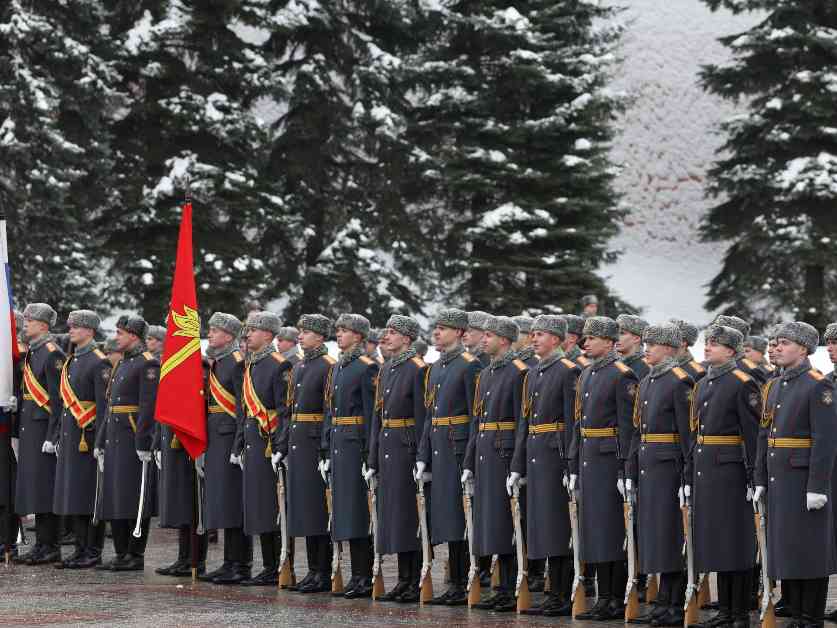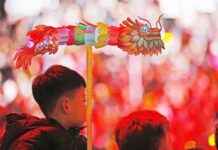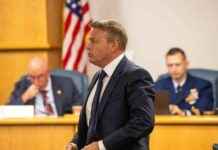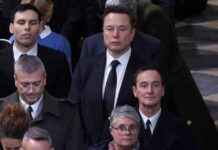Russian Troop Numbers Increased Again by Putin Since Ukraine Invasion
Russian President Vladimir Putin has once again ordered an increase in the country’s military troop numbers, this time by a staggering 180,000. This move will bring the total number of active servicemen in Russia’s army to 1.5 million, making it the second largest army in the world after China. The decree, which was published on the official government website, is set to take effect on December 1, with the overall size of the armed forces to be increased to 2.38 million people.
Implications of the Increase
According to data from the International Institute for Strategic Studies (IISS), this significant increase in troop numbers would put Russia ahead of countries like the United States and India in terms of active combat soldiers, positioning its army as the second largest globally, just behind China. With Beijing boasting slightly over 2 million active duty service personnel, Russia’s military buildup under Putin’s leadership is certainly a force to be reckoned with.
Putin’s Decree and Military Operations
This latest decree marks the third time that Putin has expanded the ranks of the Russian army since the full-scale invasion of Ukraine in February 2022. As Russian forces continue to advance in eastern Ukraine and engage in conflicts to push Ukrainian forces out of Russia’s Kursk region, the increase in troop numbers reflects Putin’s commitment to bolstering Russia’s military presence on the international stage.
In June, Putin disclosed that nearly 700,000 troops were involved in the fighting in Ukraine, showcasing the scale of Russia’s military operations in the region. Following Ukraine’s counteroffensive in late 2022, Russia called up 300,000 reservists to support its forces. However, faced with the challenges of sustaining such high numbers, Russia has turned to recruiting volunteer soldiers, offering attractive wages to entice individuals to join the military ranks.
Challenges and Considerations
Dara Massicot, an expert in the Russian military at the Carnegie Endowment for International Peace think tank, has raised concerns about the financial implications of the troop increase. Massicot questions whether Moscow is prepared to allocate the necessary resources to support a standing force of 1.5 million active servicemen. She highlights the potential need for the Kremlin to expand the defense budget and consider alternative recruitment strategies to meet the demands of the increased troop numbers.
In her analysis, Massicot suggests that Russia may need to explore unpopular decisions such as expanding the draft size or revising laws to allow more women to serve in the military. These measures could help address the challenges of sustaining a larger military force while managing budgetary constraints and operational requirements. Massicot emphasizes the importance of distinguishing between a genuine initiative to recruit and expand the military versus a mere display of intimidation.
Reservist Concerns and Population Dynamics
Many observers have noted the Kremlin’s reluctance to call up additional reservists, fearing a repeat of the mass exodus seen in 2022 when hundreds of thousands of individuals fled the country to avoid military conscription. Despite Russia’s larger population compared to Ukraine, both countries have faced significant casualties in the ongoing conflict. The exact scale of these losses remains a closely guarded secret, underscoring the sensitive nature of the military operations.
Looking Ahead: Challenges and Opportunities
As Russia moves forward with its military buildup under Putin’s leadership, the country faces a complex set of challenges and opportunities. Balancing the need for a robust defense capability with economic constraints and societal pressures will require strategic decision-making and careful planning. The expansion of the Russian army to 1.5 million active servicemen signifies a significant shift in the country’s military posture and global influence.
In conclusion, Putin’s decision to increase troop numbers reflects Russia’s ongoing commitment to strengthening its military capabilities in the face of evolving security threats and geopolitical dynamics. The implications of this military expansion extend beyond Russia’s borders, shaping regional dynamics and international relations. As the world watches closely, the impact of these strategic decisions on global security and stability remains a topic of ongoing debate and analysis.



























